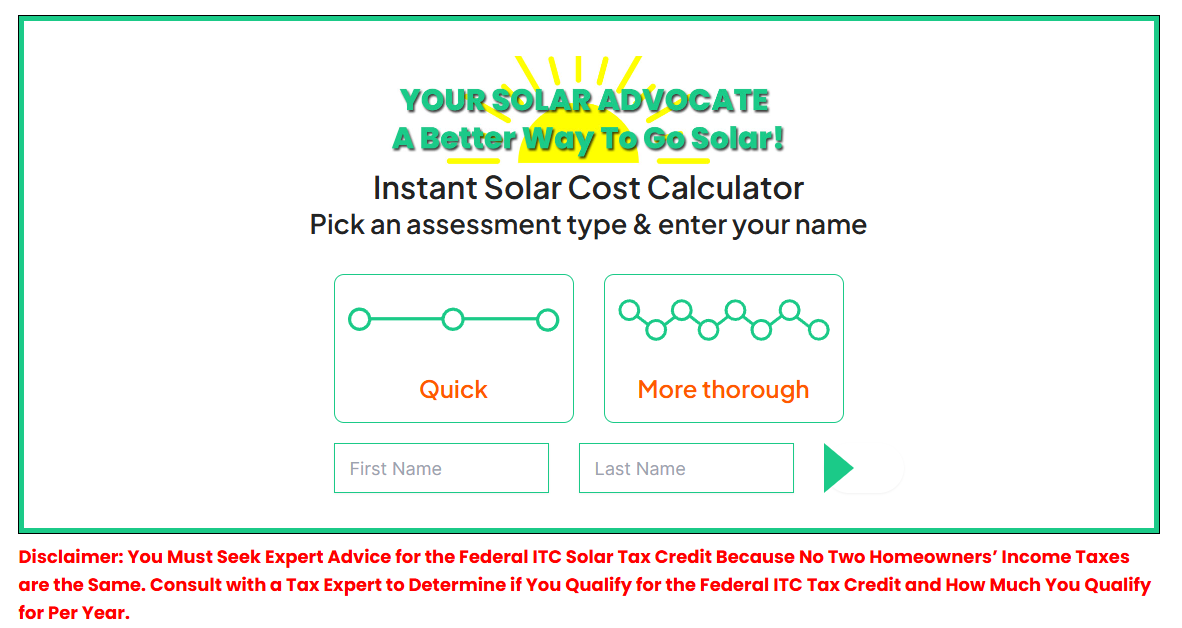How Solar Works In Florida
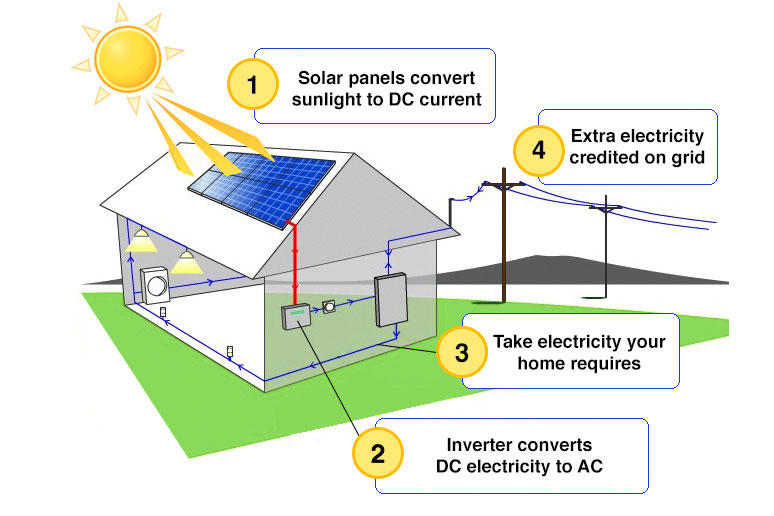
How solar works in Florida is important to know because each state has different laws pertaining to solar, So if you are considering going solar in Florida knowing all the ingredients is helpful. This article is going to cover all the aspects of home solar in Florida from beginning to end. We’ll cover the following:
Florida Home Solar Uses A Grid-Tied System (A solar powered Home Is Never Disconnected From The Power-Grid)
What Happens To Excess Power
The Wide Range of Pricing for Home Solar
Battery Back-Up
How Homes Use Solar
Solar Panels Used In Florida & Operational Equipment
Federal ITC Tax Credit
Florida Solar Laws and Rules
Grid-Tied Solar Has Cut The Cost of Home Solar In Half
There are two components to power, the first is producing electricity and the second is storing the electricity. Grid-Tied solar solves the storage problem by providing a place to store power for a monthly service charge from the power companies. Grid-Tied has effectively cut the cost of home solar in half because you don’t need expensive battery backup storage.
It’s a great deal for the consumer because storage is expensive! At least when it comes to battery backup storage, it is. Without question, Grid-Tied Is The Most Affordable Way To Go Solar In Florida.
Grid-Tied solar solves the storage problem everywhere in the world that has a modern grid. So it’s the primary reason why solar is exploding in popularity around the world. So what’s happening is, home and business owners that have a grid system to tie to, can produce their own power cheaper than they can buy it. Solar is even better for places that have no grid system to tie to, they can still get power because of the advancements in battery back-up storage systems. Naturally these storage systems are not cheap, but every single day people are turning on power for the first time in their life somewhere in the world because of solar produced power storage technology. Learn More About Grid-Tied Solar Here: Is Grid-Tied Solar The Cheapest In Florida Staying connected to the grid is great because you don’t have to be concerned with not producing enough from your solar system.
What Happens To Excess Solar Power Generated?
One of the most asked questions is what happens to excess power created? The power companies in Florida are forced to pay you retail for consumed power. But for the most part, they pay you about a quarter of what they charge you for any excess power produced. The power you use can be .13 cents per kilowatt hour used but they credit you for excess power for about .04 cents, so it doesn’t pay to sell power. It’s better to offset the power you use and receive full credit, it’s like the power company is paying you retail.
This is the reason for not doing an oversized solar system, because it’s a poor return on investment versus offsetting power usage.
You also do not have any state or local taxes for the power offset which is part of the savings when you offset. So when you sell excess power back to the power company your not saving any money on taxes like you do when you offset your usage.
That covers how a grid-tied system works and what happens to any excess power produced. Now we can move on to the varying costs of home solar and why they vary. It’s not because of the quality differences in the equipment, the prices vary mainly because of solar companies overhead costs.
There's A Wide Range of Pricing for Solar In Florida: Here's Two Different Examples
The following charts magnify a solar companies’ overhead costs that are being paid by the consumer. The absolute bare minimum any solar company charges is $6000 over and above the cost of panels and installation. That’s just to get to breakeven and then they have to add-on $5000 for-profit based on a 7K solar system. $6000 is a low estimate because for many companies it can be as much as $10,000.
Home Solar Companies Overhead Costs
| Add-Ons To Every Solar Proposal | Cost of Add-Ons |
| The Cost of Salesperson | $3000 |
| Sales Manager | $1500 |
| Proposal Builders and Permitting Department | $1000 |
| Overhead: Rent, Auto Insurance, Vehicles, and Utilities | $1000 |
| Cost of Leads and Marketing | $1000 |
| Points for Low Interest 20 Year Loan Terms (Frequently Hidden Cost) | $2500 |
| Solar Panels, Inverter, Installation for a 7K System | $17,000 |
| Solar Company Profit | $5000 |
| Total | $32,000 |
The solar company doesn’t pay any additional overhead costs, the buyer pays for them. The solar company doesn’t pay out any of the costs until the finance company funds their account after financing is finalized.
Now that you know why home solar is so expensive. Excess overhead costs is the driving force behind high home solar prices. Not only are the prices of home solar too high, but this business model is a hindrance to the growth of the home solar. But now there’s a better idea….
One Solution Fixes The Problem and Lowers The Costs Dramatically - “Your Solar Advocate” Consulting Firm
“Your Solar Advocate,” a free service, is a step-by-step solar expert consulting firm. We are Your Solar Advocate through the entire process. We assist by providing expert knowledge of the laws, rules, and contacts. We arrange the installation, solar panels, and equipment for home solar systems. The optimal system costs you an absolute minimum of $6000 Less. See “Your Solar Advocate. “ Presently, “Your Solar Advocate” is a free service, and our target price is $2.75 a watt installed.
“Your Solar Advocate” Reduces The Cost of Home Solar Dramatically
| Add-Ons To Every Solar Proposal | Cost of Add-Ons |
| The Cost of Salesperson | |
| Sales Manager | |
| Proposal Builders and Permitting Department | $1000 |
| Overhead: Rent, Auto Insurance, Vehicles, and Utilities | |
| Cost of Leads and Marketing | |
| Points for Low Interest 20 Year Loan Terms (Frequently Hidden Cost) | |
| Solar Panels, Inverter, Installation for a 7K System | $17,000 |
| Solar Company Profit | |
| “Your Solar Advocate” Target Price $2.75 a watt | $19,250 |
*Federal Solar Tax Credit Is 26% (In 2020) of The Above Cost for Qualified Buyers. The Above Example: Tax Credit is $5005
$19,250 Minus Tax Credit Your Net Cost Is $14,245
Solar Power Battery Back-Up Systems
Battery back-ups & storage are an absolute necessity for many people who have medical conditions that require never losing power. That is the only reason why a backup system has real value to some people, but most don’t need it. Power outages are so infrequent, and there isn’t a return on investment like there is with solar panels.
There are many different types of power backup systems. The most common is generators. Some run on gasoline and some on propane. Either way, generators are costly to run at the time of use. Propane tanks are trendy because underground tanks have a large capacity, but they can cost $600 to fill. Generators are not cost-effective at the time of use but are also expensive to buy.
Solar System Battery Back-Ups are Going To Become More Affordable In 2020 and Beyond
Battery back-ups are a better alternative to generators because no fuel is required because the solar system creates the power from the sun. Battery Back-Up provides power during outages. This is the area of home solar where the improvements are focused on in 2020 and beyond.
It isn’t easy to improve the solar panels because there really isn’t that much to them. Battery back-ups are without question where most of the advancements in home solar will happen over the next 10 to 20 years. A big reason is these batteries are being researched and engineered by so many different entities, like Tesla automobiles, for example. They are making advancements in batteries that will translate to solar, and it’s not just Tesla making battery-operated automobiles.
Creating power from the sun is the easy part, where to store is an entirely different issue. I believe the grid-tied system is a good idea because it reduces the cost and gives you a place to store your energy.
Back to battery back-ups; if you want to get a backup system, try to buy some time. Batteries will improve in performance, and the cost will go down in a few years. Solar panels will not improve that dramatically, if at all over the next ten years.
How Homes Use & Consume Electricity
No two homes use electricity the same because of all the contributing factors. How old are the appliances, air conditioning, insulation, and how many people live in the home? Some like more lights on, some like less lighting, and some run the air on 72, and some run it at 78? So how do you know what size system you need? Your average daily kilowatt usage determines the size of your system.
It can be difficult to offset your power bill all 12 months without an oversized system which I do not recommend. Some people don’t care about having an oversized system, but it’s best to try to offset as close as possible to the power you use.
Home Solar Equipment Required To Produce Power
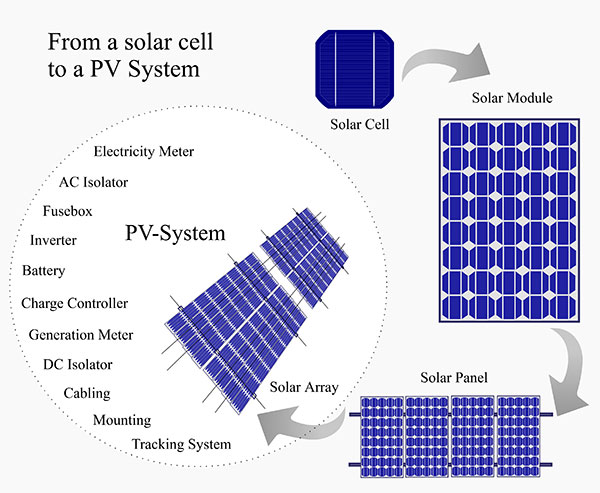
The type of solar panels used in Florida are Photo-Voltaic and produce DC power. Direct Current is low voltage power used for safety. There are no moving parts, just a solar panel filled with Solar Cells. The reason why PV panels come with 25-year warranties is that there are no moving parts so it’s not much that can break. PV Solar panels come in different voltage sizes. The voltage determines how many panels are required for an array to create the size system a home needs.
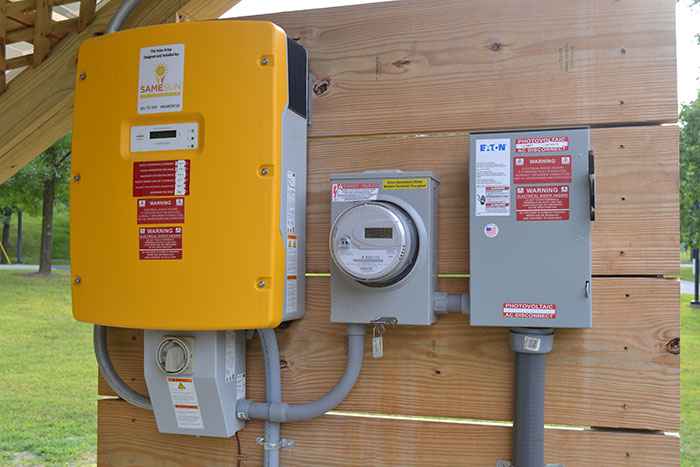
Above is an example of a string inverter on the left that feeds through a 2-way meter measuring kilowatt-hours used and kilowatt-hours produced by a solar system (meter provided by the power company). On the right is the main feed to the grid with a Shutdown breaker.
There are quite a few brands of Solar Panels and Inverters available in different sizes and specs. The size of a system determines the equipment required.
Solar Installation and Roof Safety
Quite surprisingly, roof rails for mounting the panels require very few penetrations if any at all depending on what type of roof the home has. Professional installers have the expertise to protect a roof, otherwise it will come back on them because they have to warranty their work.
Although you can replace a roof after going solar it’s ideal to have a roof and solar installed at the same time. It’s recommended to have a roof with at least 10 years of life. Many homeowners replace their roofs at the same time they go solar because of the tax credits available.
Solar Tax Credits
Please see: Florida Solar Tax Credit 2020: Step By Step Guide explains exactly how the Federal Solar Tax Credit Works? More importantly, learn if solar will work for you?
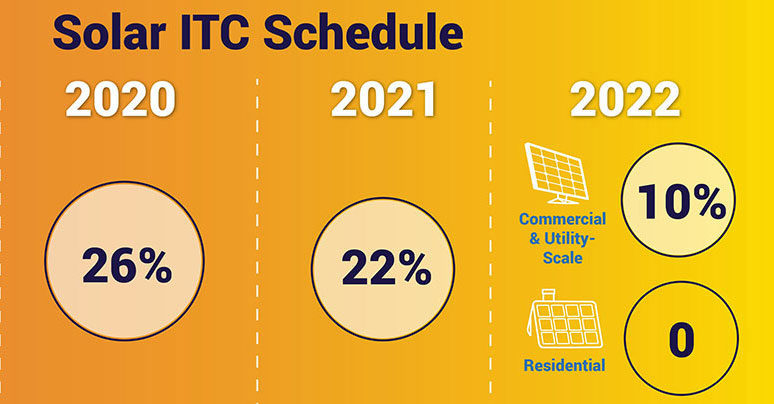
In 2020 the investment tax credit for solar systems in Florida is 26%. If your system is $20,000 your tax credit is $5200. The net cost of your system is $14,800. How do you actually receive that $5200 is the real question?
Any tax credit earned by installing The Investment Tax Credit (ITC), also known as a federal solar tax credit, allows you to deduct 26 percent of the cost of installing a solar energy system from your federal taxes. The ITC applies to both residential and commercial systems, and there is no cap on the value or size of a system.
Here’s how the Federal tax credit works, you deduct the tax credit from your actual taxes owed or pre-paid. So if you owe or have pre-paid $5200 in taxes for the year 2020 and your tax credit is $5200, you owe nothing in taxes. But If you pre-pay your taxes then you will get a $5200 refund.
Now if your taxes were $2,100 and your tax credit is $5200 you can carry forward the difference for up to five years. Although you saved $2100 in 2020 you can still deduct take the tax credit the next year until you have reached $5,200.
How Solar Pays For Itself
Your best savings is getting a solar system that offsets as close as possible to the power usage of your home, but not more. Your power company charges the lowest rate on your bill for the first 1000 KwH’s. This means even if you use more power than the solar system produces, you’re paying the power company’s lowest price for any excess.
The power company is paying you the retail price they charge because what a system produces is offset by what you use in power per month. The power company credits you wholesale for any excessive power a solar system produces, generally about a third of the retail price.
In the ideal scenario, you want your power bill savings over five to eight years to add up to the purchase price of your solar system. The system ends up costing you the exact same money you were spending anyway with the power company. Then you will reap amazing monthly savings for the next 15 to 20 years after the solar system has already paid for itself. That’s a good sound investment with the power company’s money. At that point, the system will already have made enough money for you that you can modernize your system 15 or 20 years down the road.
Most Solar Panels Come With a 25 Year “Manufacturer” Warranty
No solar company can know for certain they will be in business next year let alone twenty years from now. Any warranty they claim in addition to manufacturer can’t be guaranteed.
Solar panels are designed to last about 40 years and are warranted for 25 years. There are no moving parts, keep the panels clean and they’ll make you money every day. Keep in mind, homeowners produce solar power much cheaper than the power companies on their solar farms. The power company has to buy or lease land and build a foundation for the panels. You already have a place to put it for free so there is no additional costs for the homeowner.
The investment into solar farms the power companies are making suggests they are very confident in the longevity of the solar panels and equipment. The power companies willingness to invest into today’s technology tells us today’s solar equipment will last.
Energy has value and that’s what solar is all about. A home solar system is a power company that you own!
"Your Solar Advocate" Consulting Is a Free Service
Every single home no matter what size it is uses a different amount of electricity, based on the efficiency of that home and the occupancy. The average daily Kilowatt-hours used (on your power bill) is the main figure needed to determine what size system you need to off-set your power bill.
The Following Is How Solar Works In Florida Legal Information Laws and Rules for Solar In Florida
Florida law forbids any entity, including homeowner associations from prohibiting the installation of solar or other renewable energy devices on Florida buildings. An association may require the approval of system installation and may establish restrictions for installations.
Florida Home Owners Solar Rights Act
CHAPTER 163.04
INTERGOVERNMENTAL PROGRAMS
Florida Statutes
163.04 Energy devices based on renewable resources.
1) Notwithstanding any provision of this chapter or other provision of general or special law, the adoption of an ordinance by a governing body, as those terms are defined in this chapter, which prohibits or has the effect of prohibiting the installation of solar collectors, clotheslines, or other energy devices based on renewable resources is expressly prohibited.
(2) No deed restrictions, covenants, or similar binding agreements running with the land shall prohibit or have the effect of prohibiting solar collectors, clotheslines, or other energy devices based on renewable resources from being installed on buildings erected on the lots or parcels covered by the deed restrictions, covenants, or binding agreements.
You Can Not Be Denied Solar – That’s How Solar Works In Florida
A property owner may not be denied permission to install solar collectors or other energy devices based on renewable resources by any entity granted the power or right in any deed restriction, covenant, or similar binding agreement to approve, forbid, control, or direct alteration of property with respect to residential dwellings not exceeding three stories in height. For purposes of this subsection, such entity may determine the specific location where solar collectors may be installed on the roof within an orientation to the south or within 45 degrees east or west of due south provided that such determination does not impair the effective operation of the solar collectors.
(3) In any litigation arising under the provisions of this section, the prevailing party shall be entitled to costs and reasonable attorney’s fees.
(4) The legislative intent in enacting these provisions is to protect the public health, safety, and welfare by encouraging the development and use of renewable resources in order to conserve and protect the value of land, buildings, and resources by preventing the adoption of measures which will have the ultimate effect, however unintended, of driving the costs of owning and operating commercial or residential property beyond the capacity of private owners to maintain. This section shall not apply to patio railings in condominiums, cooperatives, or apartments.
History.–s. 8, ch. 80-163; s. 1, ch. 92-89; s. 14, ch. 93-249.

